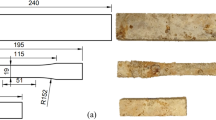Abstract
This work investigates the mechanical behavior of mycelium composites reinforced with biodegradable agro-waste particles. In the composite, the mycelium acts as a supportive matrix which binds reinforcing particles within its filamentous network structure. The compressive behavior of mycelium composites is investigated using an integrated experimental and computational approach. The experimental results indicate that the composite mimics the soft elastic response of pure mycelium at small strains and demonstrates marked stiffening at larger strains due to the densification of stiff particles. The composite also exhibits the characteristic stress softening effect and hysteresis under cyclic compression previously observed for pure mycelium. To gain further insight into the composite behavior, a three-dimensional finite element model based on numerical homogenization technique is presented. Model validation is performed by direct comparison with experiments, and a parametric study of the effect of mycelium density and particle size is discussed.









Similar content being viewed by others
References
Shao Z, Vollrath F (2002) Materials: surprising strength of silkworm silk. Nature 418:741
Gibson LJ (1985) The mechanical behaviour of cancellous bone. J Biomech 18:317–328
Dixon PG, Gibson LJ (2014) The structure and mechanics of Moso bamboo material. J R Soc Interface 11:20140321
Lynch B, Bancelin S, Bonod-Bidaud C, Gueusquin J-B, Ruggiero F, Schanne-Klein M-C, Allain J-M (2017) A novel microstructural interpretation for the biomechanics of mouse skin derived from multiscale characterization. Acta Biomater 50:302–311
Wegst UG, Bai H, Saiz E, Tomsia AP, Ritchie RO (2015) Bioinspired structural materials. Nat Mater 14:23–36
Fricker M, Boddy L, Bebber D (2007) Network organisation of mycelial fungi. In: Howard RJ, Gow NAR (eds) Biology of the fungal cell. Springer, Berlin, pp 309–330
Michalenko G, Hohl H, Rast D (1976) Chemistry and architecture of the mycelial wall of Agaricus bisporus. Microbiology 92:251–262
Howard RJ, Ferrari MA, Roach DH, Money NP (1991) Penetration of hard substrates by a fungus employing enormous turgor pressures. Proc Natl Acad Sci 88:11281–11284
Islam M, Tudryn G, Bucinell R, Schadler L, Picu RC (2017) Morphology and mechanics of fungal mycelium. Sci Rep 7:13070-1–13070-12
Gibson LJ, Ashby MF (1999) Cellular solids: structure and properties. Cambridge University Press, Cambridge
Kim OV, Litvinov RI, Weisel JW, Alber MS (2014) Structural basis for the nonlinear mechanics of fibrin networks under compression. Biomaterials 35:6739–6749
Dorfmann A, Ogden RW (2004) A constitutive model for the Mullins effect with permanent set in particle-reinforced rubber. Int J Solids Struct 41:1855–1878
Mullins L (1969) Softening of rubber by deformation. Rubber Chem Technol 42:339–362
Holt G, Mcintyre G, Flagg D, Bayer E, Wanjura J, Pelletier M (2012) Fungal mycelium and cotton plant materials in the manufacture of biodegradable molded packaging material: evaluation study of select blends of cotton byproducts. J Biobased Mater Bioenergy 6:431–439
Travaglini S, Noble J, Ross P, Dharan C (2013) Mycology matrix composites. In: Proceedings of the American Society for Composites—28th technical conference, State College, PA, pp 1–20
Yang Z, Zhang F, Still B, White M, Amstislavski P (2017) Physical and mechanical properties of fungal mycelium-based biofoam. J Mater Civ Eng 29:04017030-1–04017030-9
Hill R (1963) Elastic properties of reinforced solids: some theoretical principles. J Mech Phys Solids 11:357–372
Kanit T, Forest S, Galliet I, Mounoury V, Jeulin D (2003) Determination of the size of the representative volume element for random composites: statistical and numerical approach. Int J Solids Struct 40:3647–3679
Islam MR, Tudryn G, Bucinell R, Schadler L, Picu RC (2018) Stochastic continuum model for mycelium-based bio-foam. Mater Design (submitted)
https://grow.bio/collections/shop/products/hemp-mycelium-material?ref=ecovativeshop (2018)
Islam M, Tudryn GJ, Picu RC (2016) Microstructure modeling of random composites with cylindrical inclusions having high volume fraction and broad aspect ratio distribution. Comput Mater Sci 125:309–318
Evans JW (1993) Random and cooperative sequential adsorption. Rev Mod Phys 65:1281–1329
Version A, 6.13 (2013) Analysis User’s Manual. Dassault Systemes Simulia Corp, Providence
Kari S, Berger H, Rodriguez-Ramos R, Gabbert U (2007) Computational evaluation of effective material properties of composites reinforced by randomly distributed spherical particles. Compos Struct 77:223–231
http://www.simmetrix.com/products/SimulationModelingSuite/MeshSim/MeshSim.html
Zhao L, Schaefer D, Xu H, Modi SJ, LaCourse WR, Marten MR (2005) Elastic properties of the cell wall of Aspergillus nidulans studied with atomic force microscopy. Biotechnol Prog 21:292–299
Ifuku S, Saimoto H (2012) Chitin nanofibers: preparations, modifications, and applications. Nanoscale 4:3308–3318
Storåkers B (1986) On material representation and constitutive branching in finite compressible elasticity. J Mech Phys Solids 34:125–145
Ogden R, Roxburgh D (1999) A pseudo–elastic model for the Mullins effect in filled rubber. Proc R Soc Lond A Math Phys Eng Sci 455:2861–2877
Hashin Z, Shtrikman S (1963) A variational approach to the theory of the elastic behaviour of multiphase materials. J Mech Phys Solids 11:127–140
Acknowledgements
This material is based on work supported by the US National Science Foundation (NSF) under Grant CMMI-1362234.
Author information
Authors and Affiliations
Corresponding author
Rights and permissions
About this article
Cite this article
Islam, M.R., Tudryn, G., Bucinell, R. et al. Mechanical behavior of mycelium-based particulate composites. J Mater Sci 53, 16371–16382 (2018). https://doi.org/10.1007/s10853-018-2797-z
Received:
Accepted:
Published:
Issue Date:
DOI: https://doi.org/10.1007/s10853-018-2797-z




